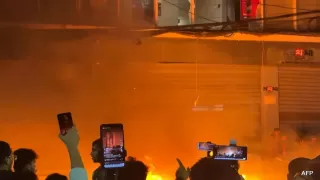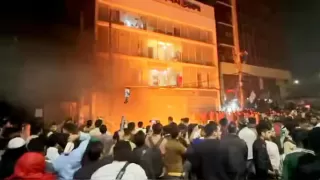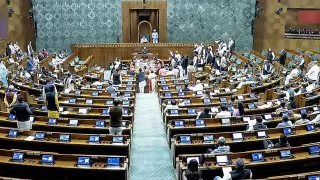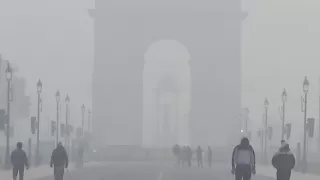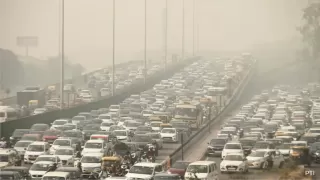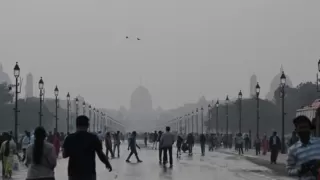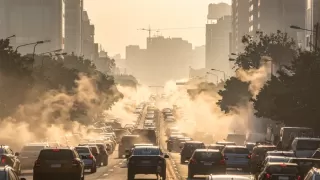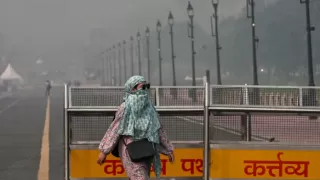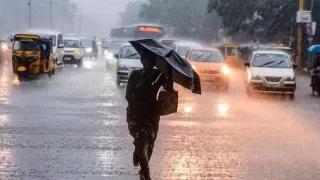The morning sky over Delhi greeted residents with a subtle sign of hope: the overall Air Quality Index (AQI) had slipped from the previous day’s alarming figure of 391 to 345 as of 8 a.m. on Monday, November 10, 2025. But this minor relief does not translate into safety. The city remains entrenched in the “very poor” air quality category, with hundreds of monitoring stations still reporting dangerously high pollutant levels. Urban motorists, cyclists, commuters and vulnerable populations alike remain exposed to health-threatening air.
Behind the numeric drop lie pockets of intense pollution across Delhi’s neighborhoods, each station telling the same troubling story. From industrial corridors to densely inhabited residential zones, the atmospheric mix of fine particulate matter and other pollutants shows only a slight easing—far from the clear air residents crave. As the city continues its annual struggle with smog, stalled winds and winter inversion layers, the respite may prove fleeting.
For many Delhiites the change is all but invisible. Masks remain a daily accessory, and outdoor activity still invites caution. With several localities recording AQIs near or above 370—even while the city-wide average hovers at 345—there is little room for complacency. Residents are bracing for what could be a protracted period of polluted skies, even if today’s reading offers a sliver of hope.
Station-Wise Readings Reflect Uneven Air Quality
The latest data from the Central Pollution Control Board (CPCB) offers a granular view of pollution across Delhi on the morning of November 10, 2025. Significant local hotspots include:
- Anand Vihar: AQI 379
- Alipur: AQI 360
- Ashok Vihar: AQI 367
- Bawana: AQI 412
- Burari Crossing: AQI 389
- Chandni Chowk: AQI 360
- Dwarka Sector-8: AQI 356
- ITO: AQI 367
- Jahangirpuri: AQI 389
- Mundka: AQI 378
- Narela: AQI 368
- Okhla Phase 2: AQI 348
- Patparganj: AQI 376
- Punjabi Bagh: AQI 324
- R.K. Puram: AQI 363
- Rohini: AQI 390
- Sonia Vihar: AQI 369
While the city average stands at 345, several pockets—such as Bawana (412) and Rohini (390)—are facing significantly worse conditions. These hotspots indicate that the overall average may mask deeper, localized pollution emergencies.
Such disparities draw attention to the layered nature of Delhi’s air crisis: even as some areas breathe “marginally better,” others are grinding through a severe haze. With each station above 300 firmly in the “very poor” bracket, the city remains at risk of slipping back into the “severe” category unless mitigating factors shift.
Understanding the “Very Poor” Category under the National AQI Scale
The concept of air quality categories is central to how residents interpret these numbers. According to the CPCB’s National Air Quality Index (NAQI) framework, the range of 301-400 is classified as “Very Poor,” while values 401-500 fall into “Severe.” :contentReference[oaicite:1]{index=1}
Under this scheme, the “Very Poor” category means broad adverse health effects may occur: sensitive groups may experience serious health impacts, and even healthy individuals could be affected if exposure continues. The CPCB documentation states that the AQI transforms a complex pollutant measurement suite into a single accessible index to communicate risk. :contentReference[oaicite:2]{index=2}
In the case of Delhi, even today’s average of 345 situates the entire city in the “Very Poor” classification. Unless there is a sustained downward trend and meteorological conditions turn favourable, the risk remains of transitioning into “Severe” territory.
Health Implications and Everyday Precautions
For the millions who call Delhi home, the “Very Poor” label is more than an abstract category—it carries tangible health implications. Prolonged exposure to elevated particulate matter (PM2.5, PM10) and other pollutants can irritate the eyes, throat and lungs; trigger or worsen chronic respiratory conditions; and raise cardiovascular risks. Anecdotal accounts from residents corroborate this.
One such resident, Rahul, speaking to ANI, described the scene succinctly:
“Pollution is really high. This is not fog, this is pollution. We are facing breathing difficulties and eye irritation. Government must take steps.”
Given the ongoing pollution levels, the following precautions are advised:
- Limit time outdoors, especially for children, the elderly, and those with respiratory conditions.
- Use protective masks (preferably N95/N99) in outdoor settings when the AQI remains high.
- Avoid heavy physical exertion outside; opt for indoor exercise until air quality improves.
- Indoor air cleaners or air-purifying measures can help reduce pollutant levels in homes.
- Stay updated on AQI readings, and adjust travel or outdoor plans accordingly.
Why the Slight Improvement May Be Misleading
The drop from 391 to 345 in the city’s average AQI may seem encouraging on its face, but experts caution against interpreting it as a meaningful improvement. A reading of 345 is still dangerously high, and multiple factors could distort the apparent relief. For instance, temporary shifts in wind direction, moisture, or ambient temperature might reduce recorded particulate concentrations without addressing the root causes.
Moreover, many stations remain far above the city-wide average, indicating uneven improvements and persistent pollution pockets. Without broad-based mitigation—such as reducing vehicle emissions, halting open stubble burning, controlling construction dust, and managing industrial sources—the gains may prove fragile.
To compound matters, meteorological conditions typical of Delhi’s winter—like temperature inversion and low wind speeds—tend to trap pollutants close to the surface, preventing dispersion and prolonging exposure. This means even if emissions dip slightly, the trapped air can still sustain elevated pollution levels.
Outlook: What Comes Next for Delhi’s Air?
In the near term, forecasters do not expect a dramatic turnaround in the city’s air quality. With the structural factors of vehicle traffic, construction activity, agricultural stubble burning in neighbouring states and adverse weather conditions in play, the “very poor” category may persist for days or even weeks.
What will determine whether the situation worsens or begins to improve are three key elements:
- Meteorological change: Wind speed and direction, temperature inversion layers breaking up, rainfall or even higher humidity can all help disperse pollutants.
- Emission control: Concrete action on the ground—restrictions on heavy diesel vehicles, curbing open burning, controlling dust from construction and demolition, ensuring industrial compliance—can reduce the burden of fresh pollution.
- Public awareness and behavioural change: Residents choosing to reduce car use, prefer public transport or car-pooling, minimise outdoor activity during peak pollution hours, and take indoor air quality seriously can collectively impact exposure patterns.
In conclusion: yes, the headline number of 345 suggests a modest improvement, but for the citizens of Delhi this still translates to a serious air quality emergency. Until the structural causes are addressed, and until meteorological conditions align favourably, the skies above India’s capital will remain hazy and health risks elevated.
Also Read: Why Tech Giants Are Giving Premium AI Tools to Indians Free





